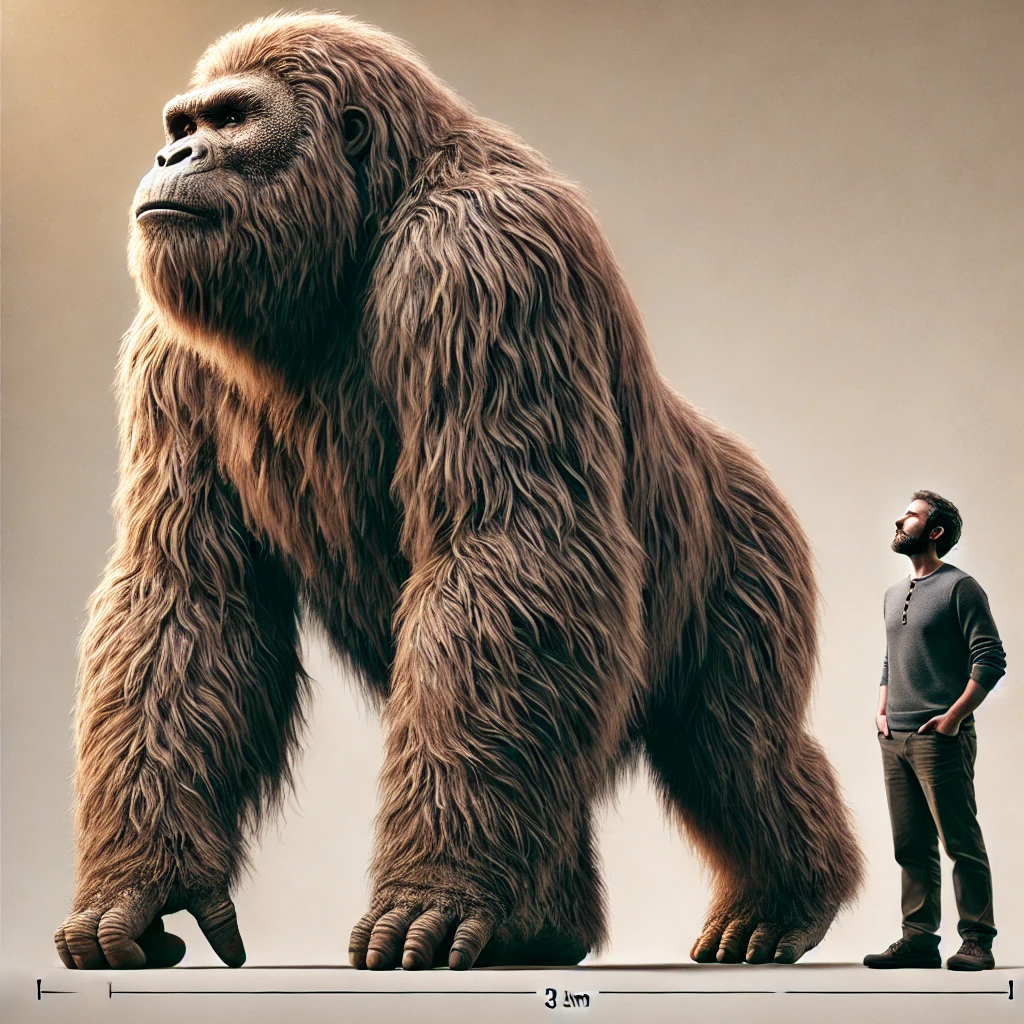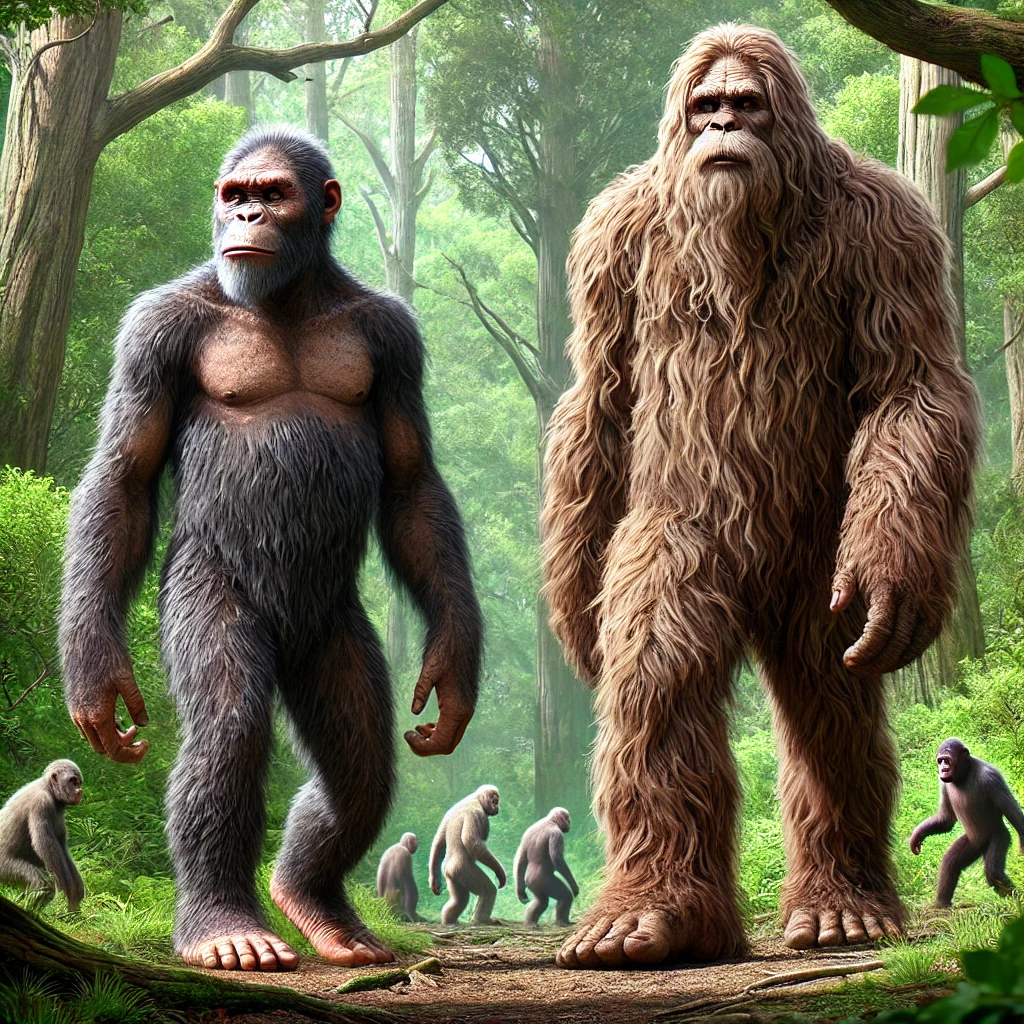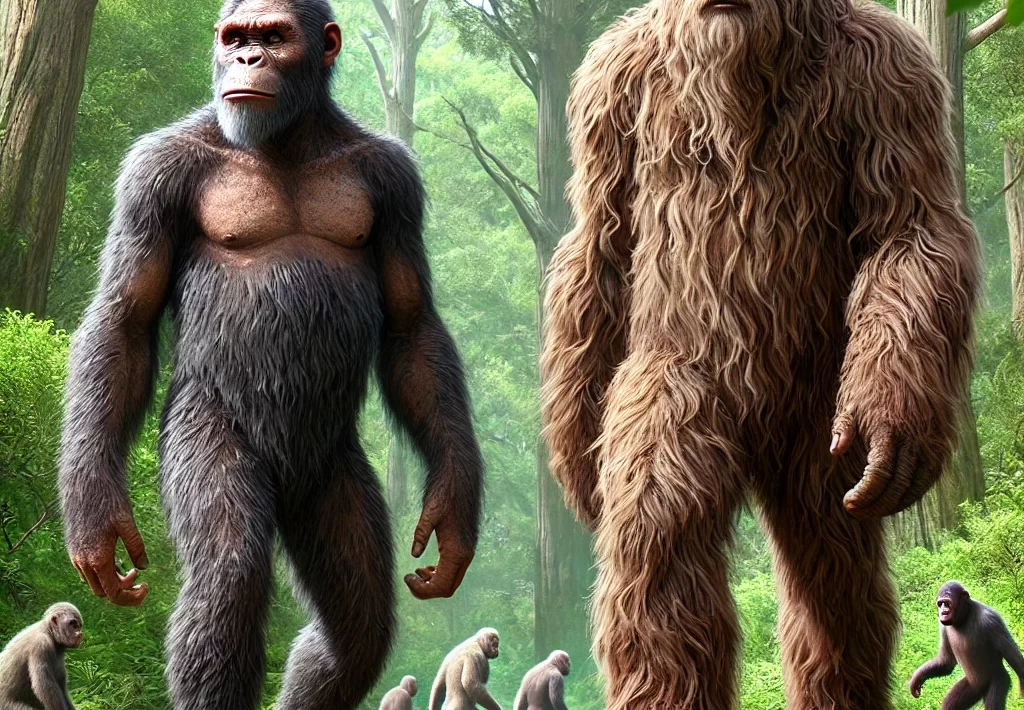Gigantopithecus, a colossal ape that roamed the Earth hundreds of thousands of years ago, has long been a subject of fascination among scientists and cryptozoologists alike. Some speculate that this ancient giant could be the origin of the Bigfoot or Sasquatch legends that persist in modern folklore. But what does science say about Gigantopithecus, and how does it compare to the elusive creature known as Bigfoot?
The Existence of Gigantopithecus: Scientific Proof
Gigantopithecus was first discovered in the 1930s when a scientist named Ralph von Koenigswald stumbled upon a massive molar tooth in a Hong Kong apothecary shop. Since then, several fossilized teeth and jawbones have been unearthed, primarily in Southeast Asia, particularly in China, India, and Vietnam. These fossils are the primary evidence of Gigantopithecus’s existence, offering a glimpse into the anatomy and lifestyle of this prehistoric ape.
Scientists estimate that Gigantopithecus existed between 2 million and 100,000 years ago, placing it in the Pleistocene epoch. This timeline means that Gigantopithecus may have coexisted with early humans, adding to the intrigue surrounding its potential influence on human myths and legends.
Comparing Gigantopithecus and Bigfoot: Anatomy, Size, and Bone Structure
Gigantopithecus was a true giant among apes. Estimates suggest it stood about 9 to 10 feet tall when upright and weighed up to 1,200 pounds. Its massive size is one of the key factors leading some to draw parallels between it and the Bigfoot of folklore. However, Gigantopithecus is known to have been a quadruped, primarily moving on all fours like modern gorillas, though it likely had the ability to stand and perhaps even walk bipedally for short distances.
In terms of bone structure, the jawbones and teeth of Gigantopithecus indicate a robust build, with large, powerful jaws adapted to a diet of tough, fibrous plant material. This contrasts with many Bigfoot sightings that describe the creature as a bipedal hominid with more human-like features.
The bipedalism attributed to Bigfoot is one of the key differences between the two. While Gigantopithecus may have had some bipedal capabilities, its body was not as well adapted for walking on two legs as humans or even some of the more bipedal-leaning great apes like chimpanzees and bonobos. Bigfoot, on the other hand, is often described as walking upright with a stride and posture more akin to that of humans.

Gigantopithecus’s Diet and Environment
Gigantopithecus’s diet was largely herbivorous, consisting of bamboo, fruits, and other plant materials found in the dense forests of Southeast Asia. The large molars and thick enamel of its teeth suggest that it was well-suited to grinding down tough vegetation. This diet is somewhat similar to that of modern-day gorillas, which also consume a largely plant-based diet.
The environment of Gigantopithecus was lush and tropical, with dense forests providing the resources needed for its massive size. However, as the climate changed and these forests began to shrink, it is believed that Gigantopithecus struggled to adapt, leading to its eventual extinction around 100,000 years ago. This loss of habitat, combined with competition from other species, including early humans, likely sealed the fate of this prehistoric giant.
Could Gigantopithecus Be the Original Bigfoot?
The similarities between Gigantopithecus and the descriptions of Bigfoot or Sasquatch in North American folklore are intriguing. Both are described as large, hairy, ape-like creatures, and the idea that Gigantopithecus could be the ancestor of these legends is a tantalizing possibility. However, there are significant differences, particularly in terms of geography and behavior, that complicate this theory.
For one, Gigantopithecus was native to Asia, not North America, where most Bigfoot sightings occur. Additionally, the bipedal nature of Bigfoot, as reported by witnesses, is not a characteristic strongly associated with Gigantopithecus.
Despite these differences, the idea that the memory of a large, mysterious ape could have been passed down through generations and across continents is not entirely far-fetched. Oral traditions and myths often blend with real historical events, and it’s possible that Gigantopithecus inspired tales that evolved into the Bigfoot stories we hear today.
While Gigantopithecus and Bigfoot share some intriguing similarities, there is currently no direct evidence to link the two conclusively. Gigantopithecus was undoubtedly a real and formidable creature that once roamed the Earth, and its existence adds a fascinating layer to the study of cryptids and human folklore.
As science continues to uncover more about our planet’s prehistoric past, the line between myth and reality sometimes blurs, leaving us to wonder about the origins of the stories that capture our imaginations. Whether Gigantopithecus was the original Bigfoot or simply a distant cousin in the annals of legend, its story is a reminder of the mysteries that still lurk in the shadows of our history.

